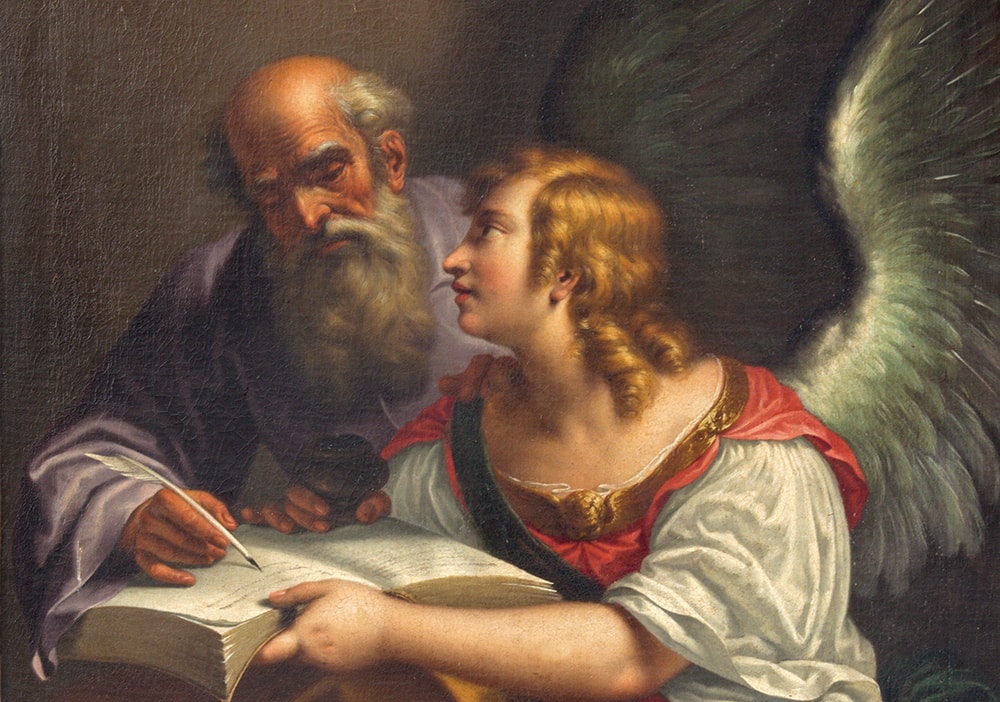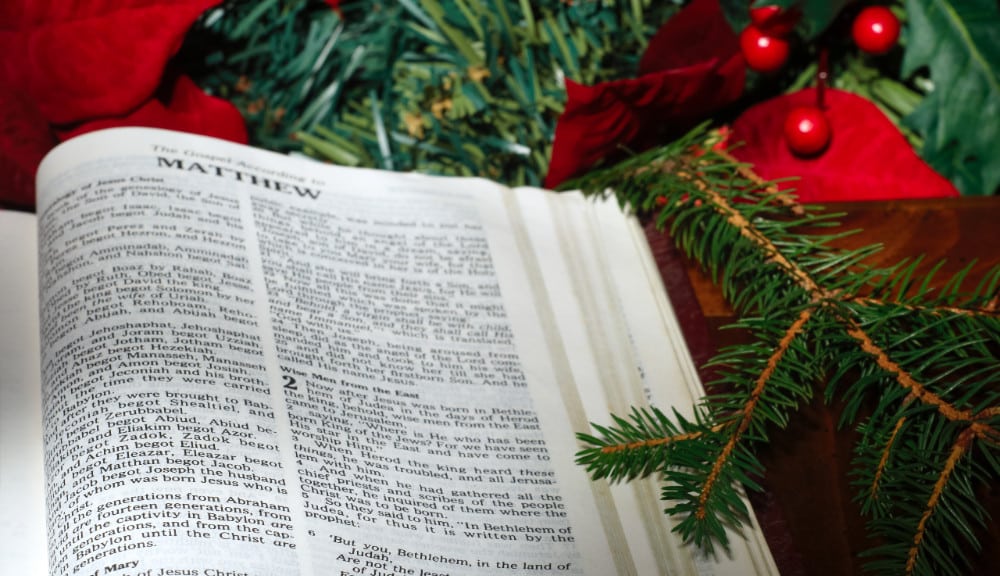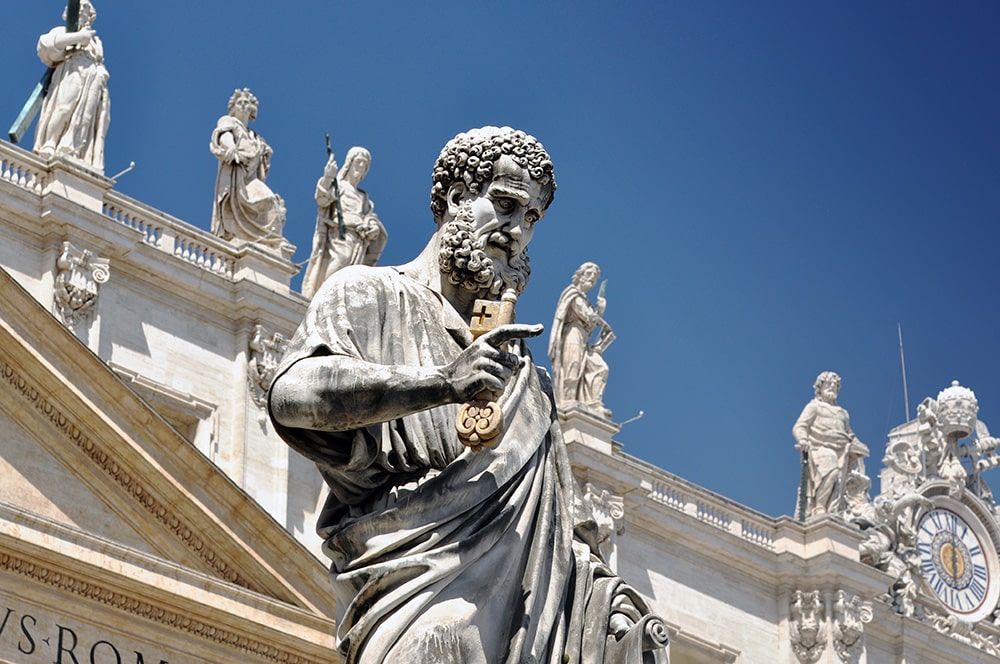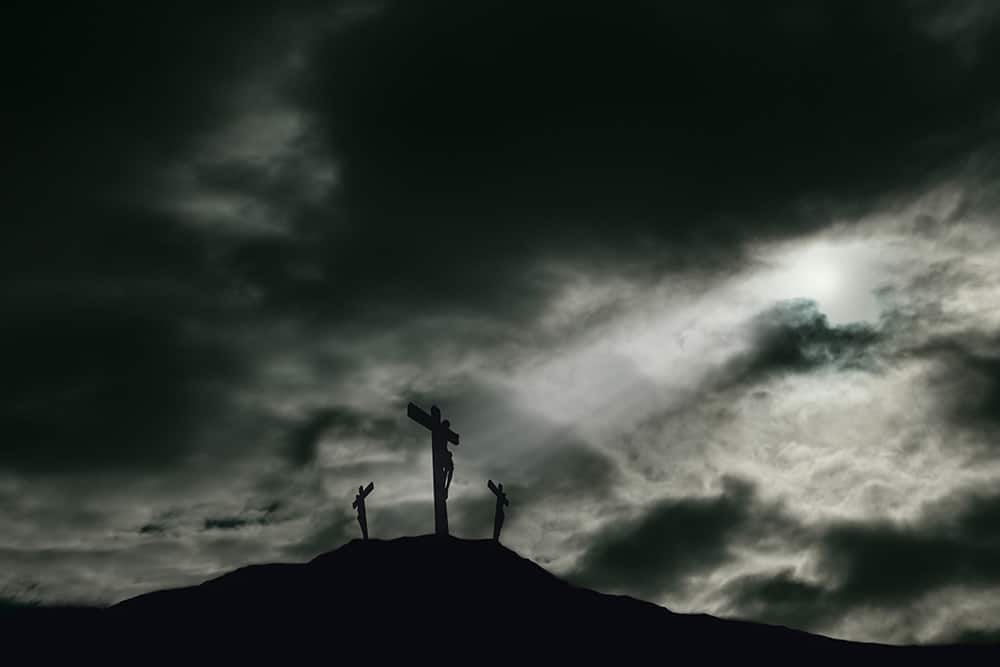This is the 12th and final installment in a 12-part series of In Focuses dedicated to exploring some central themes and texts in the Gospel of Matthew.
What took place in the life of Jesus “took place to fulfill what the Lord had said through the prophet(s)” (Mt 1:22). In some 60 places the Gospel of Matthew cites the Old Testament. It alludes to it in several hundred more. These references train our vision to see the events of Jesus’ life within the larger narrative of God’s providence. Israel’s wandering for 40 years in the wilderness is taken up in Jesus’ temptation in the wilderness. In some cases, the Old Testament allusions also play a simpler role. They are an assurance that what takes place is in fact the outworking of God’s providence in the present. Such is the case with the crucifixion and death of Jesus. This punishment, beyond measure in its cruelty and understood by some as a divine curse (cf. Dt 21:22-23), seems to show God’s failure. Jesus, like a poor priest of Baal (cf. 1 Kgs 18), seems mocked by his being abandoned to death.
| QUESTIONS TO CONSIDER |
|---|
|
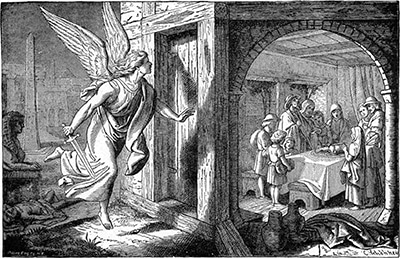
Christ himself shows us otherwise. His cry of abandonment — “My God, my God, why have you forsaken me?” (Mt 27:46) — is for those with ears to hear, an announcement of mercy and vindication. These words of Jesus are ones he first spoke through the mouth of the Psalmist: “My God, my God, why have you abandoned me? Why so far from my call for help, from my cries of anguish?” (Ps 22:2). And what begins in agony ends in victory, for God rescues the anonymous sufferer of the psalm: “You who fear the Lord, give praise! All descendants of Jacob, give honor; show reverence, all descendants of Israel! For he has not spurned or disdained the misery of this poor wretch, did not turn away from me, but heard me when I cried out” (Ps 22:24-25).
This invitation to view the death of Jesus through the lens of the psalm is strengthened by St. Matthew in other moments as well. We are told by the evangelist that “After they had crucified him, they divided his garments by casting lots” (Mt 27:35). Much the same is heard in the psalm: “They have pierced my hands and my feet; I can count all my bones. They stare at me and gloat; they divide my garments among them; for my clothing they cast lots” (22:17-19). Furthermore, the remark that “Those passing by reviled him, shaking their heads” (Mt 27:39) recalls the psalm: “All who see me mock me; they curl their lips and jeer; they shake their heads at me” (22:8). Lastly, the taunt of enemies in the psalm anticipates the chief priests, scribes and elders during the Passion: “He relied on the Lord — let him deliver him; if he loves him, let him rescue him” (Ps 22:9); “He trusted in God; let him deliver him now” (Mt 27:43). A similar comparison can be made with Psalm 69.
Connection to Passover
Matthew says even more. The events of the Passion of are not only announced; they are actively willed by Christ. In the Gospel of John, Jesus says to the Pharisees: “I lay down my life in order to take it up again. No one takes it from me, but I lay it down of my own accord” (Jn 10:17-18).
This same agency is expressed at various points by St. Matthew. At the moment of the Lord’s arrest, for instance, when one of his own cuts off the ear of the high priest’s servant, Jesus rebukes him (cf. Mt 26:52). It is within his power to restrain those who arrest him, but his “time draws near” (26:18). He wills to enter into his Passion: “Do you think that I cannot appeal to my Father, and he will at once send me more than twelve legions of angels?” (26:53). This same surrender was already announced in Gethsemane: “My Father,* if it is possible, let this cup pass from me; yet, not as I will, but as you will” (26:39).
But how it is that Matthew would have us understand this deliberate entrance into suffering and death? We find an answer in Jesus’s celebration of the Passover.
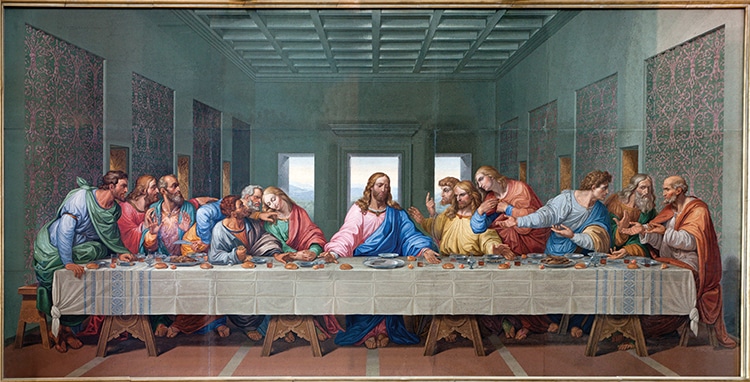
This feast recalls the Hebrew’s deliverance from Egypt. Early in the Book of Exodus, God refers to Israel as “my son, my first born” (4:22). In the 10th plague, God executes judgment on the Egyptians by the death of their firstborn and the rescue of his own. In one respect, the feast commemorates the liberative justice of God. There is, however, more to discern.
As many have noted, the earlier plagues bear a certain connection with the gods of Egypt. In the plagues, God manifests his authority over these deities. Hapi, for instance, was the god of the Nile, and Hekhet was the frog-headed goddess of fertility. When, in the first two plagues, Yahweh turns the Nile to blood and causes frogs to rain from the sky, he shows not only his lordship over the creation but so also over the gods of Egypt. The same holds for the remaining plagues, and together they constitute God’s “mighty acts of judgement” (Ex 7:4) by which Egypt and Israel come to know that he is the Lord (cf. Ex 7:5).
So also, and thereby, are they acts of severance. God’s drawing of his people into the new is more than geographical. The Hebrews must leave behind all that once bound to Egypt. Understood in this way, it is not only the gods which must, as it were, be put to death. So too is it the old self. By consuming the Passover lamb, the Hebrews identify with the sacrifice. It’s death becomes their own. The blood on the door is witness to the fact that they, by their obedience to the Lord’s command, have put to death their old selves. The last thing to die on the way out of Egypt is Israel itself. And such a death is the passage to newness of life. The feast of Passover commemorates this liberation and the death by which it was (and will be again) brought about.
The suffering servant
Within the Old Testament, the liberation from Egypt serves as a type or paradigm for future acts of deliverance. God’s rescue of Israel from the Babylonian exile is cast by the prophet Isaiah in the imagery and language of the liberation from Egypt. Fittingly, this includes another sacrificial death, one that again stands at the source of Israel’s freedom. Without ignoring the many significant differences between them, we can’t help but notice a certain likeness between the Passover lamb and the suffering servant of the Book of Isaiah. As told by the fourth servant song (Is 52:13-53:12), he is the one whose suffering and death brings liberation to Israel: “But he was pierced for our sins, crushed for our iniquity. He bore the punishment that makes us whole, by his wounds we were healed” (Is 53:5). And again: “Therefore I will give him his portion among the many, and he shall divide the spoils with the mighty, because he surrendered himself to death, was counted among the transgressors, bore the sins of many, and interceded for the transgressors” (Is 53:12).
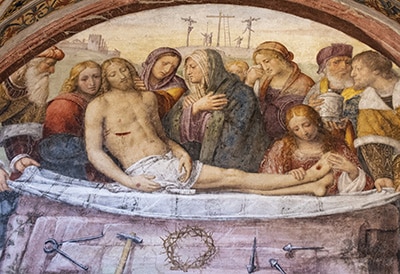
At various places in his Gospel, Matthew draws a connection between Jesus and the servant of Isaiah. In one instance, he associates Jesus’ healing ministry with Is 53:4: “[This was] to fulfill what had been said by Isaiah the prophet: ‘He took our infirmities and bore our diseases'” (Mt 8:17). Later, Matthew cites nearly the whole of the first servant song in Isaiah 42:1-4: “This was to fulfill what had been spoken through Isaiah the prophet: ‘Behold, my servant whom I have chosen, my beloved in whom I delight'” (Mt 12:17-18).
A third reference appears in the words of institution: “Then he took a cup, gave thanks, and gave it to them, saying, ‘Drink from it, all of you, l for this is my blood of the covenant, which will be shed on behalf of many for the forgiveness of sins'” (Mt 26:27-28). The words “shed on behalf of many” allude to the passage we cited above in Isaiah (cf. 53:12).
At the beginning of the Gospel, in the announcement of the angel Gabriel to St. Joseph, we learn that Jesus “will save his people from their sins” (Mt 1:21). St. Matthews emphasizes this throughout. Now, in the words of institution, the “forgiveness of sins” is attached to the suffering of Jesus, who will be “shed on behalf of many.”
It is for this reason that Jesus wills to celebrate the Last Supper and to undergo his passion during the feast of Passover. What John the Baptist elsewhere communicates clearly — “Behold the lamb of God who takes away the sin of the word” (Jn 1:29) — Matthew shows in the celebration of the Last Supper. “On the first day of the Feast of Unleavened Bread” (Mt 26:17), when the lambs were sacrificed for the evening Passover meal, Jesus sends his disciples into Jerusalem to prepare a place for their own celebration. And in the evening, when their fellow Jews were celebrating the remembrance of God’s liberation from Egypt, Jesus memorializes a new liberating sacrifice — his own. As the suffering servant was, in a certain respect, the Passover lamb which freed Israel from bondage in Babylon, so now Jesus is the new Passover lamb and suffering servant, the one whose sacrificial death will bring about a new and definitive liberation.
| KEY LESSONS |
|---|
|
There is no one definitive account in the New Testament of how the Passion liberates the world from sin and death, but in all four Gospels we find an emphasis on the relation between Passover and the events of Holy Week. According St. John, whose account differs from that of the synoptic Gospels (Matthew, Mark and Luke), the death of Jesus on Good Friday corresponds to the hour in which the Passover lambs were sacrificed in the Temple. In contrast, the synoptics align the celebration of the Last Supper with the consumption of the Passover meal. Taken together, we are invited to see in the Passion and Resurrection a new and final Exodus, not from the oppression of Egypt or Babylon but from that which separates mankind from communion with God, namely, sin and death. “For our paschal lamb, Christ, has been sacrificed” (1 Cor 5:7), and as Pope Benedict XVI summarizes, from “very early on, Jesus’ Last Supper … was regarded as a Passover: as his Passover. And it was.” Just as by the consumption of the lamb Israel puts to death their own, so now in the reception of this new memorial meal, the faithful unite themselves to the death of Jesus. In doing so they depart from the “Egypt” of sin and death and enter into newness of life.
In relating the events of Holy Week, St. Matthew would have us know that all things took place according to the Scriptures. They were known ahead of time, and they were actively willed by Christ. Placing them against the Exodus from Egypt and the return from Exile, Matthew shows us Jesus as the new and definitive Passover sacrifice. It is Christ, whose blood is shed for our sins and received in the new Passover meal, who takes away the sins of the world and allows us to “live in newness of life” (Rom 6:4).
Anthony Pagliarini is an assistant teaching professor and director of undergraduate studies in the Department of Theology at the University of Notre Dame.

